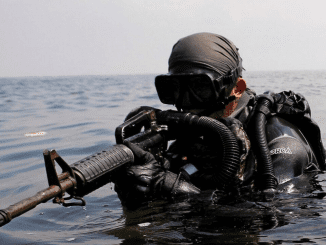
When training for the military, your first phase is typically trying to figure out the fitness standards and requirements of the branch of service you are selecting. The Army, Navy, Air Force, Marine Corps or Coast Guard official websites are a great place to begin.
The next phase is to determine how dedicated you are. Do you strive to pass the fitness test with the minimum standards, or do you aim for the maximum standards? Regardless of how much effort you put into your preparation, you will learn that your journey to serve will evolve through three distinct phases of tactical fitness.
Phase 1 of Tactical Fitness – Recruit
All future military members start our journey preparing for Phase 1 (getting to the training). The recruit phase is focused on making sure you can pass the fitness test.
Depending on the branch of service, the recruit will be required to take a fitness test. If you combined all the exercises used, they typically are push-ups (1-2 minutes), sit-ups/crunches (1-2 minutes), pull-ups and run (1.5, two or three miles) to get to the training.
You may have to master more advanced fitness tests and requirements early in your basic training, depending upon the program. So passing the basics early at an advanced level will help you diversify your training so you can practice combat readiness tests (Army), combat fitness test (USMC), occupational physical assessment test (Army), infantry (Army/USMC) and Special Operations programs (SEAL, SWCC, AIRR, PJ, CCT, TACP, RECON, Ranger, Special Forces) that allow for quick enlistment option entry.
This is where most recruits tend to make their mistakes: Either not training enough to master entry-level fitness tests, or training too long to achieve advanced fitness standards and neglecting longer runs, rucks, swims with fins, heavy lifts, load bearing and higher-repetition calisthenics of tougher programs.
To do it right, take your time and be patient but work out to master the fitness test with advanced scores. If you are going into jobs that requires higher fitness standards, “Don’t train until you get it right. Train until you cannot get it wrong.”
This may require more than a few months. Go see the recruiter when you are ready, not when you simply turn of age. Your lack of preparation will make the journey into active duty much more challenging and could end your dreams with failure or injury.
Phase 2 of Tactical Fitness — Candidate / Student
Once you are a student, now attending basic training or the selection course, you quickly will find that your level of preparation will coincide directly with how well you perform on a daily basis. Preparing for phase two of tactical fitness also requires time, and you have to start training for the challenges of your branch of service/selection course well in advance.
For some, this process takes several months or years to transition from being a high school or college athlete to a well-rounded tactical athlete. Working on your weakness is mainly what this phase of preparation is all about. When you can take a weakness like long-distance running and make it more enjoyable and more of a strength, you are in the right zone.
Preparing specifically for your future training is what this phase of training also should contain. For instance, Army Airborne/Ranger/infantry students will be tested in rucking and load-bearing activities. Get used to those and prepare a strong body to endure them.
Many of the Navy programs will require longer-distance swimming. Practice swimming, treading and diving with fins. Mixing in these longer runs, rucks, swims and heavier lifts than the PT tests require has to be part of your training, or you are destined not to last long.
Phase 3 of tactical fitness: Operator/active duty
The third phase of tactical fitness is all about maintenance, longevity, mobility/flexibility and stress mitigation, along with being able to handle the rigors and stress of the job for a career. If you stay in for a career, you will be considered “older” for a longer period of time than you are younger in these professions.
Learning how to train for the long term is critical to your physical and mental well-being. Understanding your body as well as current stress levels will help determine how hard to train on a given day if you did not sleep the previous night, for instance. An easy stress-reducing, low-impact cardio sometimes is sufficient when compared to a high-intensity training session.
Learning the Fitness Rules After 40 while in your 30s will help you maintain longer and still be as strong as you were in your 20s. Consider a periodized approach to your training especially in phase 3 of tactical fitness to maintain all the elements of fitness throughout the years.
Where many in the active-duty/operator phase make mistakes is that they focus on taking semiannual fitness tests too much. Having a high fitness standard so the PT test is not a stressor to your survival in the military is a requirement. Put in time training not only for the PT test, but also for the other elements of tactical fitness that allow you to do your job effectively (strength, power, endurance, stamina, mobility, flexibility, speed, agility).
Getting out of the habit of training regularly and only focusing on 2-3 weeks of fitness before a PT test is a route many take, only to be hurt after running and doing push-ups and sit-ups twice a year. Don’t get stuck doing “what you learned at boot camp” and start training for the physical challenges of the job, your personal maintenance and to become a functioning member of the military and beyond.


